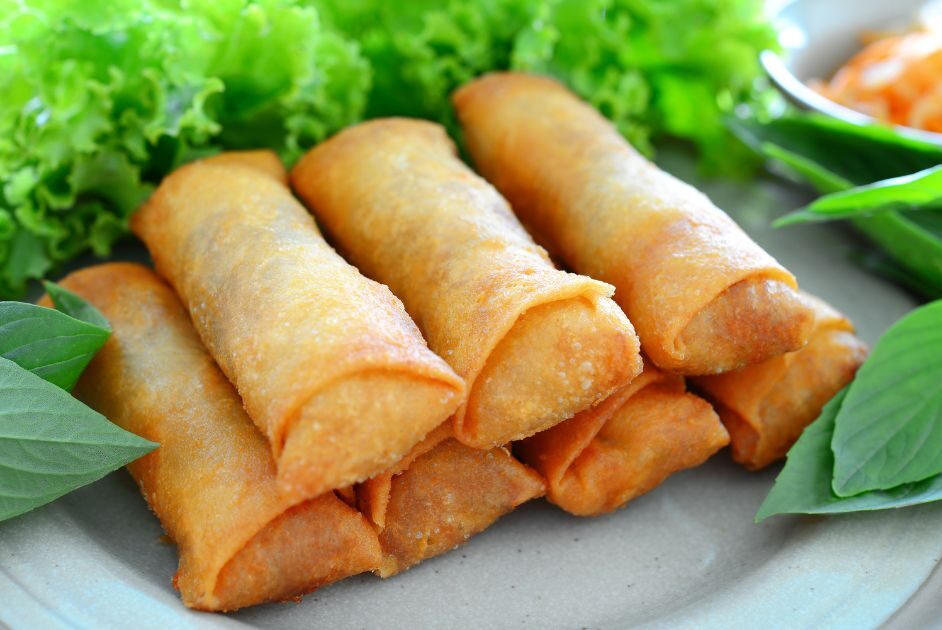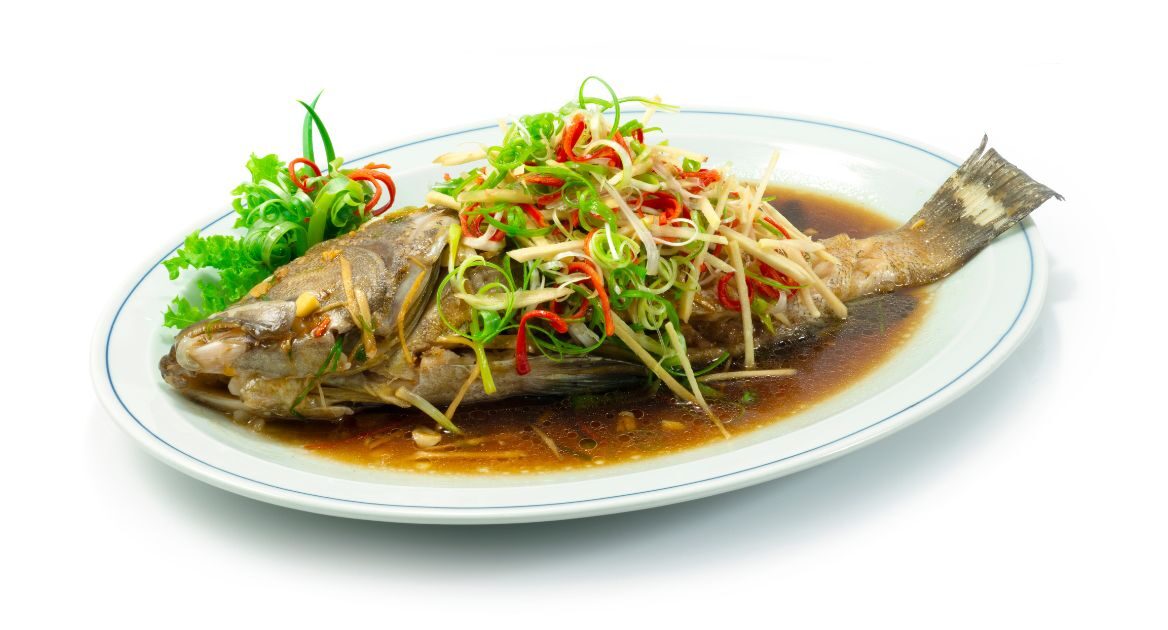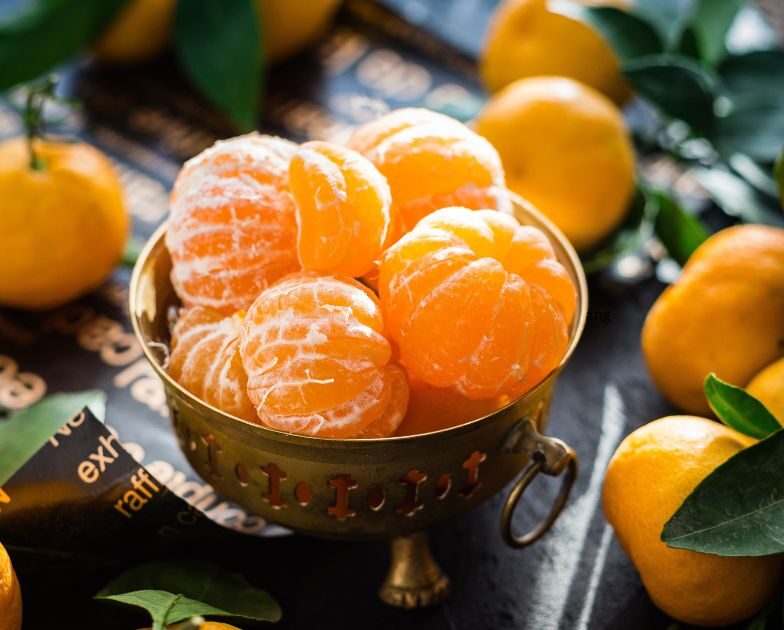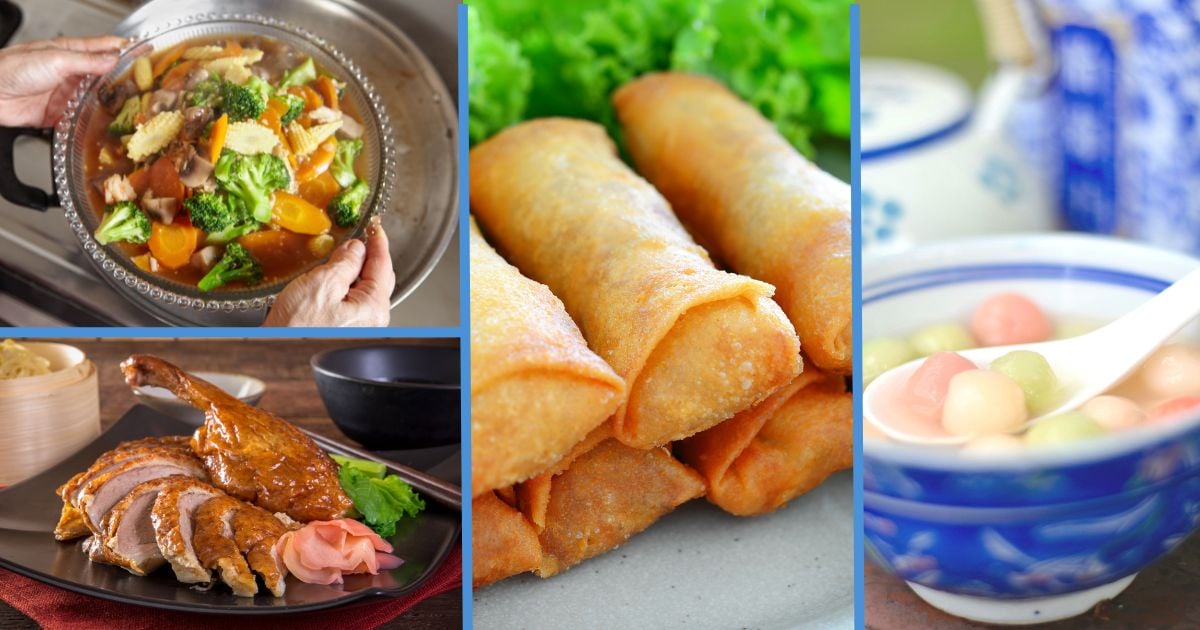CNY is around the corner and we can’t wait to eat an endless amount of bak kwa and abalone. In fact, you’ve probably already begun munching on a few snacks.
I’m eating a mandarin orange as I type this.
As we all know, the different ingredients in yusheng have different meanings – golden crackers represent prosperity, plum sauce represents sweet and loving relationships, etc.
Maybe this 1000m long yusheng means all your huat and blessings multiply 1000 fold.
What you may not know is that other CNY dishes have meanings too. From your spring rolls and fish to even vegetables and oranges, all these common CNY goodies have meanings behind them.
Read on to find out about the meanings of various CNY dishes so you can show off to your relatives and be the “smart cousin” this year.
Spring Rolls – Wealth

Starting off with a crowd favourite, we have spring rolls.
Spring rolls are a popular appetiser in Chinese cuisine. These crispy golden rolls filled with crunchy vegetables, and occasionally meat, are a popular dish in South East Asia.
Being tasty and easy to eat, this dish commonly finds itself on tables in many households during this time of year.
Due to their shape and colour, which resemble gold bars, spring rolls are seen as symbols of wealth and are eaten during CNY to attract wealth for the coming year.
Speaking of wealth, the next dish also brings in moolah.
Vegetables – Wealth and Fortune

We love to welcome money during the new year so it’s a good thing there are many foods that symbolise wealth.
The chinese word for lettuce is sheng1 cai4. This sounds like sheng1 cai2, which means “to become wealthy”.
Another vegetable, baby bok choy (xiao3 bai2 cai4), represents fortune.
Eating these two vegetables is bound to guarantee you an auspicious year ahead filled with fortune and luck. Stir frying these vegetables will give you a mouthful of flavour and crunch, with a dash of haut in every bite.
Say less. I’m going to eat a whole head of lettuce and three servings of bok choy.
Pen Cai – Harmony and Auspiciousness

This dish dates all the way back to the late Song dynasty.
Pen cai, made of various delicacies, used to require many people to work together as ingredients had to be gathered from different places. It would take a community a few days to gather all the ingredients before coming together to make this dish. Hence, it symbolises harmony.
The number eight is considered to be lucky in Chinese culture. Since pen cai is made from eight ingredients, it’s considered lucky and hence auspicious.
Most basic pen cai (pen2 cai4) would have eight ingredients. But of course, this dish is completely customisable and some people like to add more than 10 ingredients to theirs.
Fish maw, whole abalone, sea cucumber, fresh scallops, black fungus, dried oysters, mushrooms, and chinese cabbage are ingredients found in most, if not all, pen cai. These eight ingredients, soaked in delicious thick gravy, blend together to create the perfect treasure trove of delicacies.
Pen cai, which literally translates to “basin of vegetables”, is auspiciously nutritious and you’ll definitely want a second serving.
Fish – Surplus

Surplus in Chinese is sheng4 yu2.
This sounds similar to fish, yu2. Hence, fish is associated with surplus and abundance.
Whether that be abundance of money, luck, love, or whatever else you want, eating fish may be your first step to getting what you want.
There are many ways to enjoy fish but the most common CNY way is to steam it. Steamed fish is delicious, nutritious, and easy to share. Just beware of bones.
We typically also eat yusheng with raw fish, usually salmon.
When fish is used in yusheng, we often hear the saying “nian2 nian2 you3 yu2”, which roughly translates to “may we have fortune and abundance every year”.
No matter how you eat your fish or what dish you have it in, it holds the same meaning of surplus and abundance.
Tang Yuan Rice Balls – Reunion
This dish is more commonly eaten during the Mid-Autumn Festival in August. However, there are some who still enjoy this dish during the New Year.
Tang yuan is a homophone for union, tuan2 yuan2.
It is also spherical in shape, alluding to the idea of completeness
Tang yuan hence symbolises togetherness and wholeness.
Since CNY is a time for families to come together, tang yuan is a delicious and meaningful dish to serve at gatherings; making this sweet dessert the perfect way to end your reunion dinners.
Peking Duck
This delicious and expensive delicacy makes a gorgeous centrepiece at dinner tables. This dish, like vegetables, represents fortune. After all, Peking duck is not cheap.
It also represents elegance, sophistication, and mastery of the Chinese cuisine.
Preparation of this dish requires much skill, patience, and a good understanding of the right ingredients and techniques.
The thin, crispy skin usually hints at how good of a job the chef did on the duck. The crispier, the better.

Mandarin oranges aren’t a dish but if there’s one thing that you’ll see a ton of every CNY, it’s this fruit.
The colour orange, along with red, is considered auspicious. See why we wear red during CNY in this article.
Mandarin oranges, like tang yuan, are spherical in shape. This, together with its vivid orange hue, makes the oranges resemble the sun.
This aligns it with the yang principle of fortune, making it a wonderfully meaningful fruit to eat to usher in good luck for the New Year.
Moreover, mandarin orange, when spoken in Chinese, sounds similar to the word “wealth”.
Fortune and wealth – two things we love to wish for every CNY!
Mandarin oranges are also given in pairs as an act of well-wishing. Giving oranges in odd numbers is generally frowned upon, so be mindful when you go visiting.
Moreover, if you are visiting the house of a newlywed couple, keeping the stem and leaves on a mandarin orange symbolises freshness and fertility.
Now that you know all these facts about common CNY dishes, you’re well-equipped to entertain your aunties and uncles as you eat.



